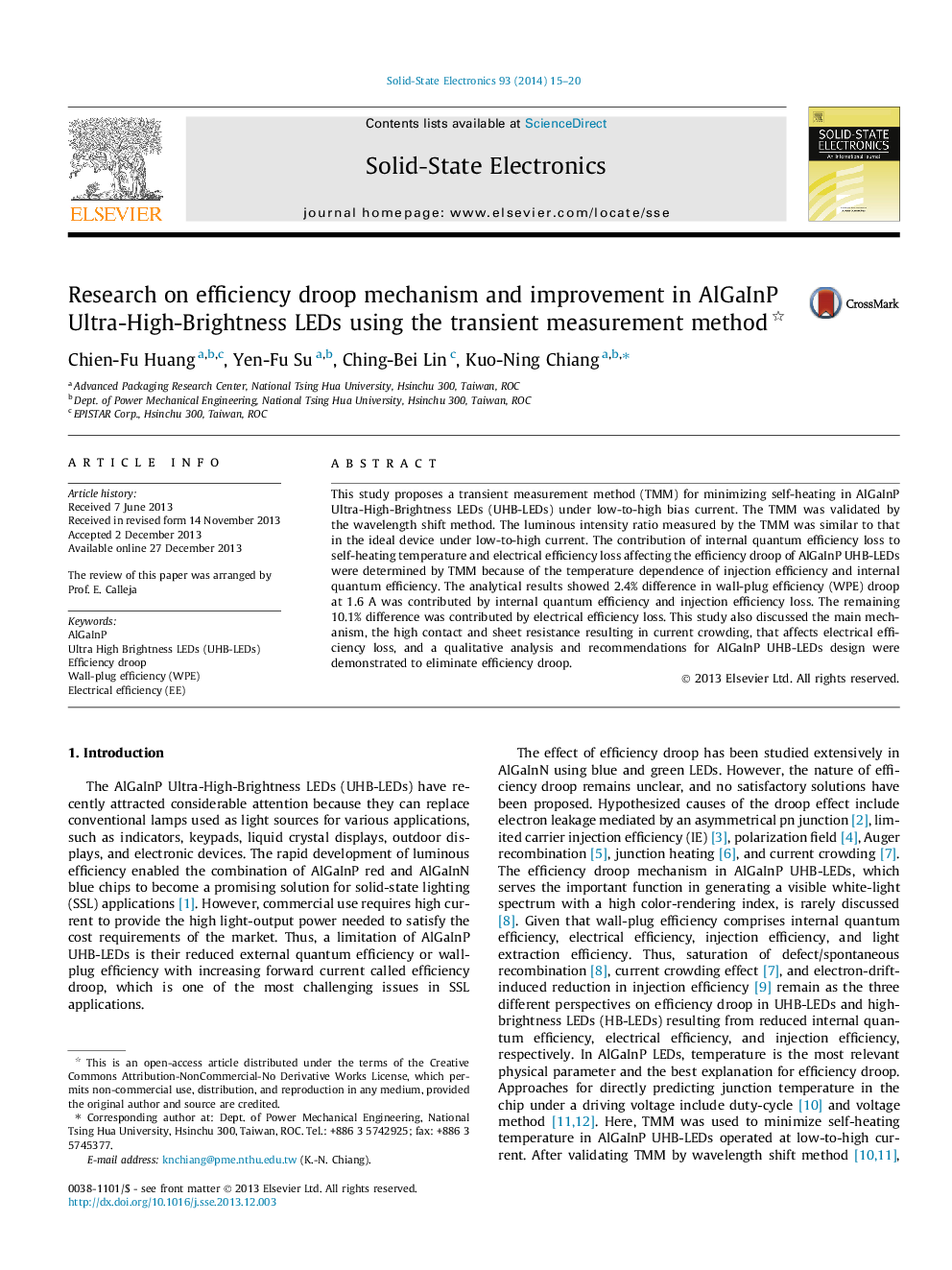| Article ID | Journal | Published Year | Pages | File Type |
|---|---|---|---|---|
| 747739 | Solid-State Electronics | 2014 | 6 Pages |
•Transient measurement method was demonstrated to minimize the self-heating effect.•The AlGaInP LEDs droop behavior contributed by IQE, IE, and EE was investigated.•EE loss was the main mechanism of WPE droop in AlGaInP LEDs rather than IQE and IE.•Recommendations for AlGaInP LEDs design were proposed to eliminate droop effect.
This study proposes a transient measurement method (TMM) for minimizing self-heating in AlGaInP Ultra-High-Brightness LEDs (UHB-LEDs) under low-to-high bias current. The TMM was validated by the wavelength shift method. The luminous intensity ratio measured by the TMM was similar to that in the ideal device under low-to-high current. The contribution of internal quantum efficiency loss to self-heating temperature and electrical efficiency loss affecting the efficiency droop of AlGaInP UHB-LEDs were determined by TMM because of the temperature dependence of injection efficiency and internal quantum efficiency. The analytical results showed 2.4% difference in wall-plug efficiency (WPE) droop at 1.6 A was contributed by internal quantum efficiency and injection efficiency loss. The remaining 10.1% difference was contributed by electrical efficiency loss. This study also discussed the main mechanism, the high contact and sheet resistance resulting in current crowding, that affects electrical efficiency loss, and a qualitative analysis and recommendations for AlGaInP UHB-LEDs design were demonstrated to eliminate efficiency droop.
Graphical abstractFigure optionsDownload full-size imageDownload as PowerPoint slide
